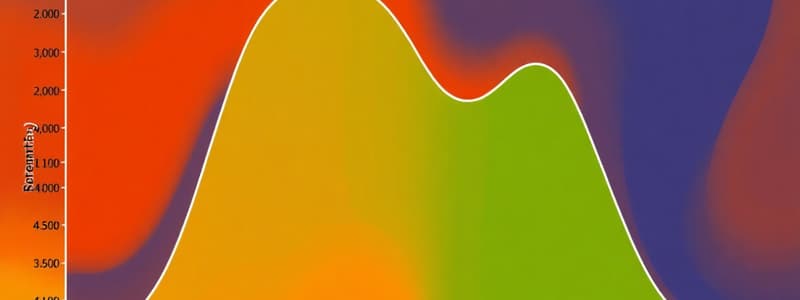Podcast
Questions and Answers
What does the interquartile range measure in a set of data?
What does the interquartile range measure in a set of data?
- The spread of all values in the dataset
- The average of the highest and lowest values
- The middle 50% of the values (correct)
- The difference between the mean and the median
Which of the following accurately defines the coefficient of variation?
Which of the following accurately defines the coefficient of variation?
- The mean squared deviation from the median
- The difference between the 25th and 75th percentiles
- The total spread of the data points from the mean
- The ratio of the standard deviation to the mean, expressed as a percentage (correct)
What is the quartile deviation also known as?
What is the quartile deviation also known as?
- Variance
- Semi-interquartile range (correct)
- Mean absolute deviation
- Standard score
Which measure of variability considers all data points in its calculation?
Which measure of variability considers all data points in its calculation?
Which statement about range is true?
Which statement about range is true?
Study Notes
Interquartile Range (IQR)
- Measures the spread of the middle 50% of a data set, providing insight into the data's variability by excluding outliers.
- Calculated as the difference between the third quartile (Q3) and the first quartile (Q1).
Coefficient of Variation (CV)
- Defines the ratio of the standard deviation to the mean, expressed as a percentage.
- Serves as a standardized measure of dispersion, allowing for comparison between data sets with different units or means.
Quartile Deviation
- Also known as the semi-interquartile range.
- Represents half the difference between the first (Q1) and third (Q3) quartiles, indicating variability within the central portion of a data set.
Measures of Variability
- The standard deviation is the measure that considers all data points in its calculation.
- Captures data spread by evaluating how each observation differs from the mean.
Understanding Range
- The range is the difference between the maximum and minimum values in a data set.
- It is a simple measure of variability but can be heavily influenced by outliers, making it less informative for data interpretation.
Studying That Suits You
Use AI to generate personalized quizzes and flashcards to suit your learning preferences.
Description
Test your understanding of key measures of variability such as interquartile range, coefficient of variation, quartile deviation, and range. This quiz covers definitions, calculations, and important concepts related to these statistical measures.



